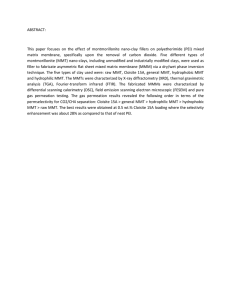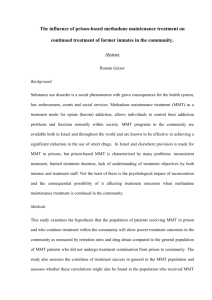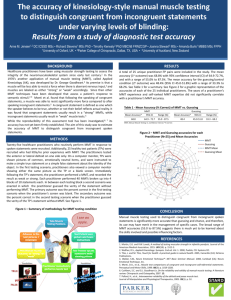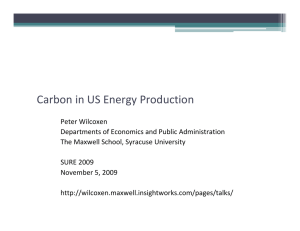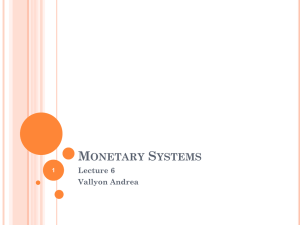MMT and the Theory of the Monetary Circuit
advertisement
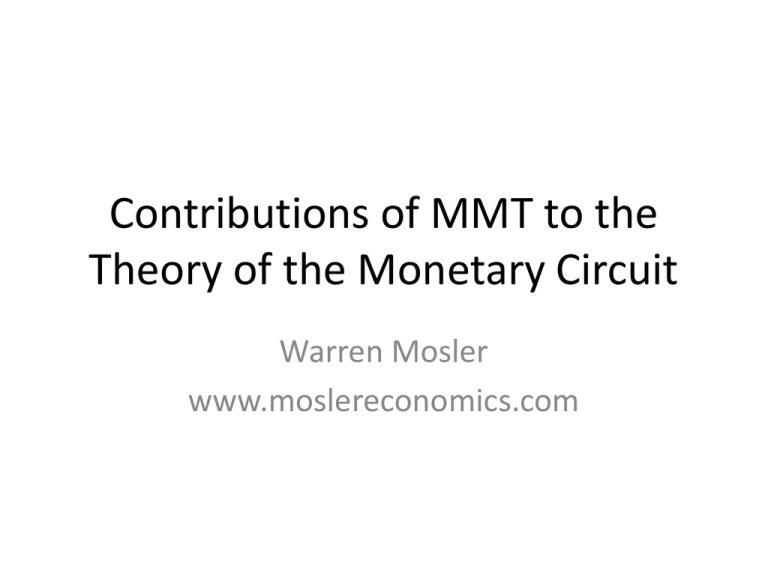
Contributions of MMT to the Theory of the Monetary Circuit Warren Mosler www.moslereconomics.com Horizontal and Vertical Components The Monetary Circuit • • • • • • • Business borrow to buy inputs and pay labor Wages and profits buy the output Business retires borrowings Flux and reflux Then government is introduced MMT begins with government I called this the vertical component Credit and the Monetary Circuit • Credit expansion in general is ‘horizontal’ • Causation runs from loans to deposits • MMT: loans create both deposits and reserves The Monetary Circuit (cont.) • The unanswered question is why anyone works in exchange for a unit of account with no intrinsic value. • Traditional responses assume value from an infinite regression. • MMT begins with the forces driving why anyone would work for the unit of account MMT • • • • The Currency is a (simple) public monopoly That currency is necessarily not ‘neutral’ Monopolists are necessarily price setters When monopolists restrict supply, the result is excess capacity Government and the Vertical Component • The State is desirous of provisioning itself • The State levies a tax payable in its currency • This creates sellers of real goods and services seeking the needed currency. • Sellers of labor seeking the currency are defined of unemployed. Spending and Unemployment • Government spending employs the unemployed created by the tax liabilities • If government spending isn’t sufficient to provide the funds needed to cover tax liabilities and savings desires, the result is unemployment. Inflation • The currency monopolist is necessarily price setter • The price level is necessarily a function of prices paid by government when it spends, and/or collateral demanded when it lends Savings Desires • Institutional demand leakages tend to force income not to be spent • Private sector credit expansion and government deficit spending fill the spending gap • Changes in private sector savings are generally the result of changes in private sector debt Government and Unemployment • Government provisions itself to provide for public infrastructure • What sense does it make for government to create more unemployed through tax levies than it wants to employ? • For a given size government, there is a level of taxation that corresponds to full employment. MMT • Federal spending is not (operationally) constrained by revenues. • Federal taxes function to regulate aggregate demand, and not to collect revenues per se. • Federal borrowing functions to support the term structure of interest rates, and not to collect revenues per se. MMT (cont.) • Government spending is a matter of crediting transaction accounts at the central bank. • Government borrowing is a matter of debiting transactions accounts and crediting securities accounts at the central bank. • Paying back government borrowing is a matter of debiting securities accounts and crediting reserve accounts at the central bank. MONETIZING THE ECONOMY • Taxes cause goods and services to be offered for sale • This causes a general desire to obtain that currency MMT and Uncertainty • Uncertainty used to about why people use money • MMT says uncertainty is about why people save financial assets denominated in the government’s currency of issue Full Employment and Price Stability • Current policy uses an unemployed buffer stock as a price anchor • MMT reveals the option and benefits of using an employed buffer stock as a price anchor Contributions of MMT to the Theory of the Monetary Circuit Warren Mosler www.moslereconomics.com
